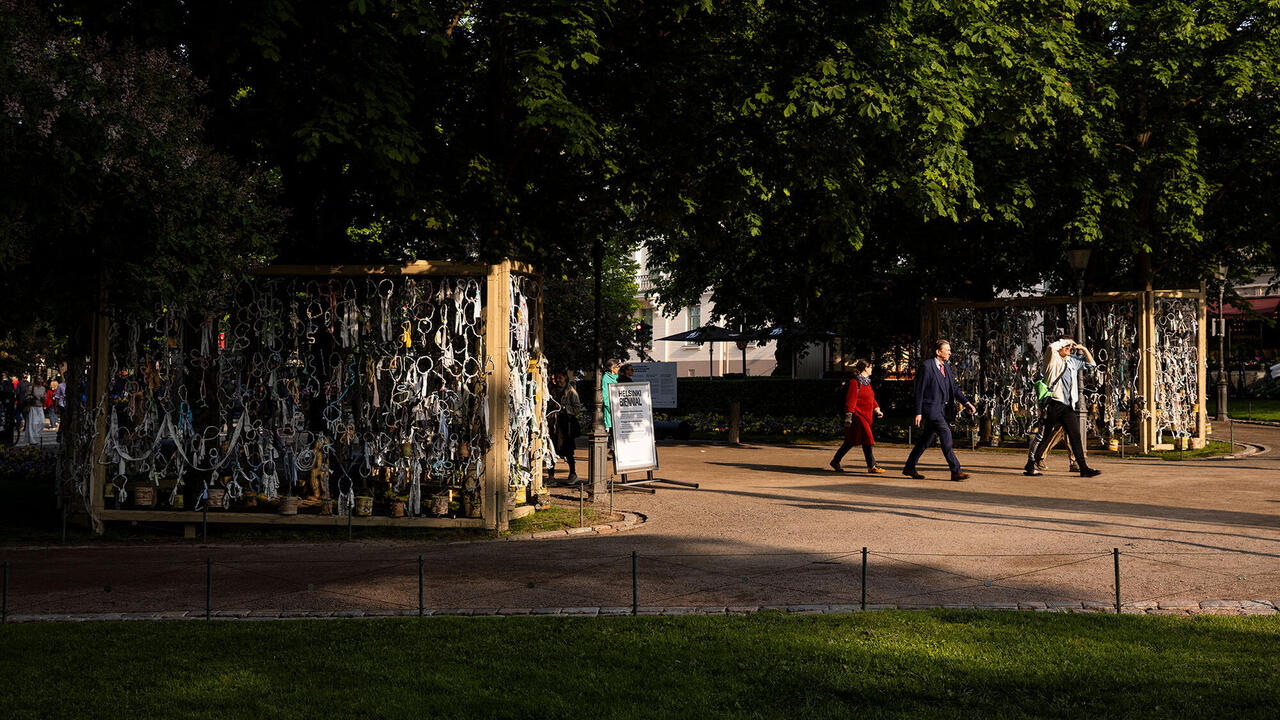Esko Männikkö
The photographer Esko Männikkö creates images dealing with everyday life in the Finnish countryside and the dire circumstances of lonely men in the deep forests: a bearded man stands on the steps of his little house raising a bottle of liquor against the nocturnal sky; sturdy hunters attend to their equipment; a group of drunken bachelors gather for a pathetic Christmas party.
It may sound like a parody of how people in other parts of the world picture Nordic existence: solitary, gloomy and introverted. Don't these photographs just confirm the most common prejudices about Finland? After encountering Männikkö's images in a number of different contexts, however, I have realised that they have more to offer. Some of the photographs have stuck vividly in my memory, and I often want to see them again: the old watchmaker wearing skiing-boots, stretched out nonchalantly on his bed; the man with the impressive moustache and fishing nets; the group of men with red Santa-caps and beer bottles. They are all, indeed, very Finnish; but they also represent ways of life on the margins of society that can be found in most parts of the world. Some of these images are very sad, but Männikkö never tries to produce artistic effect at the expense of the human beings depicted. Their lives are rendered with respect. They are not victims; in fact, they radiate dignity.
In relation to the snapshot aesthetics of much 'trendy' 90s photography, Männikkö's images appear rather old-fashioned in their careful craftsmanship. They blend the transient quality of the documentary with a keen sense for colour and light that is sometimes reminiscent of classical painting, an association which is facilitated by the heavy wooden frames in which they are presented. The people depicted are surrounded by their belongings decorations, mechanical gadgets, TV sets, and plastic kitchen utensils. These objects attain a symbolic function, as in Renaissance art. The men carefully attend to their belongings and the objects appear almost as extensions of their personalities.
In his most recent exhibition, I meet the whole crowd again. Some images have now escaped the heavy frames, and are presented as gigantic photographic frescoes covering large parts of the wall. This could develop into a new genre, leaving the limitations of the photograph behind to create whole environments.
Only very seldom does one glimpse a woman in these images: the world captured by Männikkö is barren and masculine. The females have fled the countryside, leaving the bachelors behind on the margins of civilisation. Persistent and lonesome. White, European, heterosexual men and still so distant from the omnipotent character feminist theory has dismantled. Männikkö's photographs are reminders of forms of masculinity that thwart most preconceptions. Where does culture end and nature begin? Considering how much energy has been spent recently discussing the social construction of the Woman, it might be time to apply the same tools to the problem of masculinity. Following 'Constructing Masculinity' and 'The Black Male...', perhaps the debate will soon be enriched by a new category the Finnish Watchmaker.
















